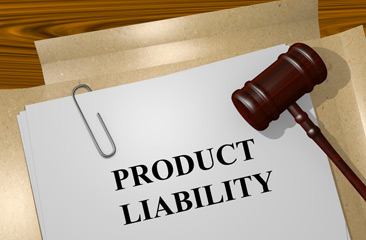Individuals harmed by a defective or unsafe product may have a cause of action against the entities that designed, manufactured, sold, or furnished that product. The injury caused by the product is established through a product liability medical record review. Typically, product liability cases are based on the theories of negligence, breach of warranty, misrepresentation and strict tort liability. Risks exist in product design, manufacturing and marketing; and manufacturers and retailers need to remain cautious regarding the same.
- A design defect exists even before the product is manufactured and makes the product inherently dangerous.
- A manufacturing defect could affect a whole batch of products, or a single product.
- Marketing defects exist when a potentially dangerous product is marketed to the public without adequate warnings about the risks of use.
Product liability litigation can be highly challenging and expensive in the long run. To cite an example of a typical case and its outcome, in December 2016 Johnson & Johnson was ordered by a Texas jury to pay more than $1 billion to patients who alleged that the company hid flaws in its Pinnacle artificial hips that had to be removed surgically. In such instances, evidence to prove the injury and treatment provided would be obtained through a comprehensive medical chart review. The federal jury in Dallas concluded that J & J DePuy unit’s officials that knew the devices were defective, failed to properly warn doctors and patients about the risks involved. This verdict includes more than $30 million in actual damages for six plaintiffs and more than $1 billion in punitive damages. J & J still faces round nine thousand lawsuits accusing the company of mishandling the metal-on-metal hips. The company had stopped selling the devices in 2013 after the FDA tightened artificial hip regulations. This is the third largest overall jury award of 2016, as Bloomberg data reveals. Bloomberg also points out that the punitive award against J & J is the largest against a company in the year 2016.
While this is a case where the manufacturer is clearly responsible for the injury caused to the plaintiffs, there may be cases where the damage could be caused by an oversight or lack of observation.
Manufacturers and retailers can limit their exposure to product liability claims by adopting certain practical measures.
- Routine testing: The products should be tested at every stage of the production life cycle from designing to quality assurance, to ensure that there are no defects.
- Provide appropriate warnings: Appropriate warning labels should be provided to inform the end user about the risks involved. Proper labeling and the use of carefully worded instruction manuals can help in reducing risk.
- Ensure product specifications are carefully reviewed by product line managers: It should be ensured that the specifications are consistent with the manufacturer’s product warranty. Appropriate disclaimers should be there regarding fitness of the product for a particular purpose. The end customer should be informed regarding the extent to which the products have/have not been tested against certain parameters. The product specifications should be shipped with the product to the end customer.
- Understand the product source: All entities in the supply chain including manufacturers, distributors and retailers should be diligent enough to understand and trust where their products are coming from.
- Indemnification from upstream sources: Retailers and suppliers can ensure via a contract that manufacturers hold ultimate financial responsibility for any adverse events.
- Insurance: All entities in the distribution chain should ideally maintain appropriate insurance coverage that will protect them in case a claim arises. The policy type and coverage limits would depend on the nature of the product and the entity’s role in the distribution process.
- Disclaimers: Some jurisdictions allow members in a product distribution chain to disclaim certain warranties as regards consumer products. Though all product liability claims cannot be avoided with such disclaimers, they may help reduce the damage in the event of a claim.
When products are sold via a distributor, it is necessary for manufacturers to ensure that the product specifications are also sent to the end user. If the distributor has modified the specifications, it is important to find out to what extent they have modified the same. Prospective distributors should be asked to provide evidence that they have proper insurance, and are financially sound. It is also vital to find out whether the distributor has a litigation history. When proper steps are taken with due diligence, manufacturers would be best positioned to overcome challenges and allegations brought against them regarding their products. Similarly, distributors also should ensure that their product sources are reliable and trustworthy and that the products come with all the necessary warnings.




